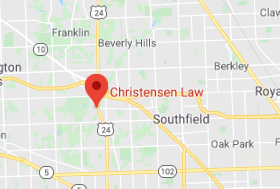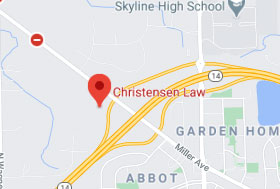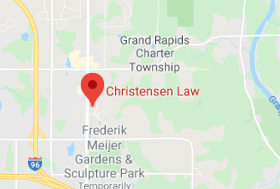
Some of the losses caused by an accident are easy to calculate. Medical bills, rehabilitation expenses, lost wages, and other accident-related expenses can be quantified with proof of your monetary losses. But what about damages that can’t easily be assessed? Pain and suffering does not come with a price tag.
There’s no denying that accident victims often suffer tremendous pain and mental anguish after serious accidents. However, being awarded pain and suffering damages in Michigan is subject to certain restrictions. You’ll need an experienced injury attorney by your side in the fight for the compensation you’re owed.
Don’t let your pain and suffering go under-compensated. Let a Michigan personal injury lawyer help you fight for all damages today.
What is Pain and Suffering in a Michigan Personal Injury Case?
Pain and suffering refers to the physical pain, emotional trauma, and mental stress that you experience as a result of your accident-related injuries.
To prove pain and suffering in Michigan, you must meet a legal standard set by the state’s tort threshold law (most commonly referred to as the Michigan bodily threshold). To meet that standard, you must prove that you have suffered “permanent serious disfigurement” or a “serious impairment of body function” by showing the following:
- You have sustained an impairment that is obvious to other people.
- The impairment is of a body function that is greatly significant.
- The impairment affects your overall ability to lead your normal life.
Examples of threshold injuries can include broken bones, traumatic brain injury (TBI), paralysis, disfigurement, and amputation. A knowledgeable personal injury lawyer can help you determine if your injuries meet the Michigan threshold.
What Michigan Accidents Can Result in Pain and Suffering Damages?
The following types of accidents can result in pain and suffering damages:
- Vehicle accidents: Car accident and truck collision victims may be entitled to pain and suffering damages if they have serious injuries.
- Motorcycle accidents: Bikers often find themselves hurt by driver negligence, and they may be able to pursue pain and suffering damages.
- Bicycle and pedestrian accidents: Victims of these accidents may face catastrophic injuries and extreme pain and suffering during recovery.
- Slip and fall accidents: Property owners may be held liable if you suffer a slip and fall on their premises.
- Animal bites or attacks: Dog bites are the most common.
- Nursing home abuse: The elderly are one of Michigan’s most vulnerable populations. Victims may suffer tremendous physical, emotional, or financial abuse at the hands of negligent nursing home employees.
- Construction accidents: Damages for workplace injuries can be quite tricky to navigate. Depending on the circumstances, you may be able to pursue a personal injury lawsuit for compensation, and thus, pain and suffering damages.
These and other injury cases can cause immense emotional suffering and physical pain, and you deserve fair and full damages for this non-economic loss.
Economic vs. Non-Economic Damages in Michigan Injury Cases
Damages in a personal injury case are classified into two distinct categories: economic and non-economic damages.
Economic damages are objectively quantifiable losses. They can be measured and verified. Examples include:
- Property damage
- Past and future medical expenses
- Loss of future earnings
- Vocational rehabilitation
- Out-of-pocket expenses
Non-economic damages are more subjective and based on non-monetary losses. Pain and suffering is a non-economic damage. If you’ve been hurt, you can be awarded compensation for:
- Physical pain
- Mental and emotional anguish
- Disability
- Disfigurement
- Loss of companionship
- Loss of consortium
- Lost enjoyment of life
- Embarrassment, shame, and humiliation
Why is Measuring Pain and Suffering So Difficult?
Pain and suffering is largely subjective. Though there are several factors that may be considered when calculating a settlement amount for pain and suffering, they are subject to interpretation. The victim’s age and circumstances, general health, mental history, education, work situation, and current overall condition are all important aspects to think about when coming up with a figure to negotiate.
When it comes to calculating pain and suffering, there is no standard method that is used or mandated. The most common ways are:
- Multiplier method: Multiplying the total amount of your monetary damages with a number between one and five. The number that you multiply with depends on the gravity of your injuries.
- Per diem: Your daily pain will be assigned a cost and multiplied by the number of days that it will take you to make a full recovery.
- Estimation: General estimate of what your pain and suffering costs.
When you work with an attorney, you can ask about calculation methods and the full range of your losses.
Evidence to Support Pain and Suffering Claims
All successful pain and suffering claims require strong evidence. This may include:
- Medical reports, pharmaceutical records, and physical therapy logs
- Photos and video illustrating and demonstrating the injuries
- Medical testimony and evaluations regarding the magnitude of the injuries
- Statements from injured party describing the pain and trauma that they are experiencing because of the injury
- Statements from family members and friends describing how the injured party was impacted by the injury
- Prescriptions and over-the-counter medication receipts
- Proof of time off taken from school or work
- A pain journal documenting the daily struggles of the injured victim
Try to keep a record of your injuries and the effects they have on you. This can help us build a claim for your compensation.
What Affects Pain and Suffering in Michigan?
When proving that you are in pain and suffering from your injuries, we draw on witnesses and experts to testify to your losses and the impact of the injury. Each case is different, and many factors will determine how much we seek and how much you are eligible to pursue. Some of these factors include:
- Injury severity: We will look at the full extent of your injuries, how long you are expected to deal with the injuries, and how severe the harm is.
- The impact on your daily life: The physical, mental, and emotional impact of your injuries can severely disrupt your life. You may not be able to work or maintain personal relationships due to reoccurring pain and mental hardship.
- Age of the victim: This is especially relevant if your pain is expected to last a long time, as a younger person may have to deal with this pain and suffering for longer periods of time.
- Comparative fault: If you are somewhat responsible for the accident, your percentage of fault can limit how much you receive in pain and suffering (and other non-economic damages).
These and other factors can affect how much you receive in many forms of damages, not just pain and suffering. A personal injury attorney can make sure your damages are accurately assessed and fight for what you are owed.
How Do PIP Laws Work When Seeking Pain and Suffering in a Michigan Accident?
Pain and suffering is available to victims of multiple kinds of accidents, but accidents involving vehicles add a layer of complexity that can be tricky to deal with. Michigan is a No-Fault state when it comes to motor vehicle accidents. Basically, those involved in an accident will first go through their own personal injury protection (PIP) policy to seek certain types of damages, regardless of who was at fault.
PIP only covers medical expenses and wage losses, but not non-economic damages that many people suffer. As mentioned earlier, you must have injuries that exceed the limits of your PIP. Only then can you pursue additional damages, including those non-economic losses like pain and suffering.
Michigan Pain and Suffering Damages Limitations
In order to make a claim for pain and suffering in Michigan, there are some limitations that you must be aware of. A claimant’s ability to recover compensation could be restricted by Michigan’s modified comparative fault doctrine, outlined in Mich. Comp. Laws Ann. § 600.2959.
This rule bars any of the parties who are more than 50 percent or more at fault for an accident from recovering any compensation for their non-economic damages like pain and suffering, but they can recover a portion of their economic losses.
Time Limits on Claiming Pain and Suffering and other Damages
There is also a deadline to file personal injury claims in Michigan, per Mich. Comp. Laws Ann. § 600.5805. This is called the statute of limitations. You have three years to file a personal injury or wrongful death claim. The deadlines are shorter for certain other injury claims, so be sure to check with an attorney right away to make sure that you don’t miss the window to file.
We Can Help You
If you have suffered injuries in an accident that wasn’t your fault, a personal injury lawyer at Christensen Law will stand up for you. Our acclaimed legal team has been helping clients get the compensation they deserve for decades.
Our legal team’s commitment to excellence is well-recognized. Firm founder David E. Christensen was named Lawyer of the Year in 2019 by Best Lawyers, and the firm has consistently held an AV Preeminent designation from the peer rating service Martindale-Hubbell. Call today for a free case review. There’s no obligation and no fee unless we win your case.






